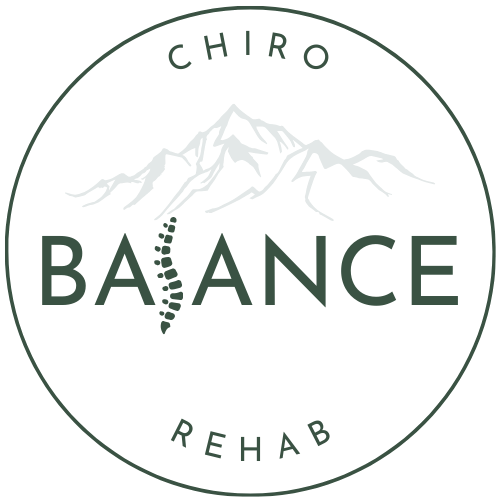What is a Chiropractic Adjustment?
What Does a Chiropractor Work With?
Dr. Dani works with families and individuals in the Denver area with a wide variety of musculoskeletal concerns, but specializes in pregnancy, postpartum and pediatric chiropractic. She has additional training in Tethered Oral Tissues (tongue tie, lip tie, etc.) as well as torticollis, and breastfeeding concerns. She works closely with other professionals to help direct care in the most beneficial way possible. She is also Webster Technique certified and helps moms through their pregnancies! As everyone knows, Chiropractors adjust, but Dr. Dani also includes rehab exercises, dry needling (for adults) and other techniques to provide individualized care!
What Does a Chiropractor Adjust?
Chiropractors are known for their ability to create “pops and clicks,” but it’s SO much more than that! When you move, there is a network of communication from that area to the brain and vice versa. Chiropractic adjustments help to restore proper motion within restricted areas which, in turn, restores proper communication by relaying sensory input to the brain. What does this mean? If a joint isn’t moving well, the surrounding musculature doesn’t get stretched. Muscles don’t get stretched= the brain isn’t receiving input from that area and output is affected as well. Pretty cool, huh? When we adjust an area, this creates a short lasting response within the muscles (muscle spindles) which then feeds information back into the brain! This can help with position sense (knowing where your body is in space), reaction times, brain processing and sensory integration!
What Is the Popping Sound an Adjustment Makes?
The “pop” or “click” sound that you commonly notice when being adjusted is simply a release of gas from the facet joints. These joints basically connect to the vertebra (bones of the spine) above and below it. As satisfying as it is to hear, it isn’t “required” to get a pop or click in order to restore motion within a joint. The adjustment itself simply creates mobility within a restricted joint and allows for better range of motion and function. There is no “putting things back in place” unless something is truly dislocated and that’s not a situation you would see a Chiropractor for!
What Should You Do After a Chiropractic Adjustment?
As you now know, when you are adjusted, the Chiropractor is restoring proper motion within the joint so the more you can keep that area moving post adjustment, the better! Activity such as walking, a light work out or doing some yoga/movement flow is EXTREMELY beneficial. It’s not uncommon to feel a bit achy, especially if soft tissue work or dry needling was performed. Again, your best friend is movement and some heat! Any discomfort should be similar to workout soreness. If you have any questions, follow up with your Chiropractor for individualized recommendations! When it comes to newborn adjustments, the treatments is INCREDIBLY gentle, so there should not be any muscle soreness. It’s not uncommon for babies to fall right asleep or have a big bowel movement post adjustment. This is totally normal when you get them into a parasympathetic state (rest and digest) with some relaxing and gentle bodywork!
Is Chiropractic Care Safe During Pregnancy?
Chiropractic during pregnancy is incredibly safe. Dr. Dani does an thorough exam to determine any concerns or complications and tailors treatment to what is going on at each visit. An adjustment in early pregnancy looks very different from one in later pregnancy and postpartum! If you’re curious about what a treatment during pregnancy looks like check out this video! If there is a concern with baby positioning such as breech, transverse, etc. Dr. Dani does not “flip babies,” but she is certified in Webster Technique!
Adjusting Throughout Pregnancy Can Help With Many Concerns Such as:
Is Adjusting a Newborn Safe?
Chiropractic Care can also help with many concerns in newborns and is INCREDIBLY gentle, yet effective! Newborns can have tension from in-utero positioning, the birth process or even things like a tongue tie. There are no “pops and clicks” in a newborn and instead, it’s more bodywork and looks very similar to a massage. The pressure used is equal to what you would use to test an avocado or tomato!
Adjusting Newborns | Infants | Babies Can Help With:
What if My Pain Keeps Coming Back?
If a problem keeps coming back after getting adjusted, a lack of mobility likely isn’t the problem. This is why Dr. Dani incorporates a THOROUGH exam and other modalities such as rehab exercises to correct not only the area of discomfort, but other contributing factors as well. Concerns such as hypermobility (those of us who are extra flexy) can also play a part and typically require more stability and/or more focused work on areas such as strengthening and stabilizing. You can continue to adjust an area that hurts, but if you don’t identify the underlying cause of WHY it hurts, you may just be going in circles!
Is Chiropractic Safe for Hypermobility?
If someone is TRULY hypermobile, the answer might be gentle bodywork and stability exercises rather than a true adjustment. Sometimes manual adjusting can actually irritate things so treatment should vary for each individual based off of their body and their needs!
Also check out…
Hi there!
My name is Dr. Dani and I’m an In-Home Chiropractor to busy individuals and families within the Denver Metro area. I love working with the pregnancy, postpartum and pediatric populations and strive for quality care through extended appointment times, follow-up recommendations and education so that you can feel both empowered and cared for!
Questions? Comments? CONTACT ME
Need some bodywork? BOOK HERE
Love the info and want to leave a review!? LEAVE A GOOGLE REVIEW
Instagram: @balance.chiro.and.rehab
YouTube: Dr. Dani Engle



